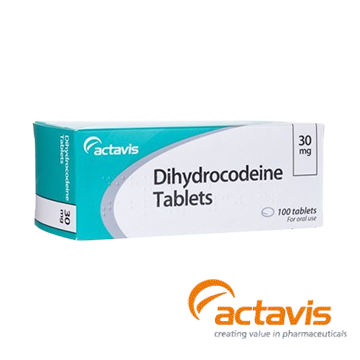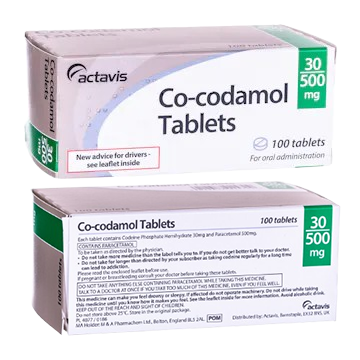Dihydrocodeine and co-codamol are known for their pain relief properties, which are often prescribed for chronic pain conditions such as sciatica or phantom limb pain. Both drugs are effective but vary in strength and dosage. Here’s a detailed comparison to help you understand their differences and determine which one might best suit your needs.
Key Points at a Glance:
Dihydrocodeine is generally stronger than co-codamol:
Dihydrocodeine is a more potent opioid, it is better suited for acute pain compared to Co-codamol, which combines codeine and paracetamol.
Both have side effects:
Dihydrocodeine can cause nausea, bleeding and difficulty breathing, while Co-codamol can cause drowsiness, dizziness, or lightheadedness. Individuals react differently.
Usage varies by pain level:
Dihydrocodeine is usually prescribed for moderate to severe pain, while Co-codamol is often recommended for moderate pain where NSAIDs are less effective.
Dihydrocodeine vs. Co-codamol: Which Is Stronger?
Dihydrocodeine is a more potent opioid compared to Co-codamol, making it better suited for managing moderate to severe pain. It is typically prescribed in 30 mg doses every four to six hours, offering consistent relief but with a higher risk of side effects like itching or difficulty breathing. Co-codamol, on the other hand, combines codeine and paracetamol, making it effective for moderate pain when NSAIDs are insufficient. Its varying strengths allow for flexibility, but its efficacy depends on individual metabolism and tolerance. Both medications are strong analgesics, with the choice depending on the severity of pain and patient response.
Dihydrocodeine:
Dihydrocodeine is a synthetic opioid primarily used to manage moderate to severe pain and respiratory distress. It is usually taken at a dose of 30 mg every four to six hours, but exceeding the prescribed dose will not provide pain relief—only possible side effects
Invented in 1908, the opioid is about twice as strong as Codeine and can be given in a variety of forms, including medicines, elixirs, and injections, but injections are rarely used because of its potential risks such as anaphylaxis.

Key Features of Dihydrocodeine:
- Developed initially as a cough suppressant, it later became a pain management medication.
- Structurally similar to codeine but more potent.
- Often combined with other ingredients like acetaminophen for enhanced efficacy.
- Known side effects include itching, flushing, and in rare cases, breathing difficulties.
Co-codamol:
Co-codamol is a combination of codeine and paracetamol (or acetaminophen) and is commonly prescribed for moderate pain. It’s available in varying strengths, with codeine content ranging from 8 mg to 60 mg per tablet.

Key Features of Co-codamol:
- Suitable for moderate pain when NSAIDs like ibuprofen fail.
- Works by combining the analgesic effects of paracetamol with the opioid properties of codeine.
- Side effects may include dizziness, drowsiness, and nausea.
Additional Considerations:
- Both medications can cause dependency if used long-term or in higher-than-prescribed doses, so they should be taken exactly as directed.
- Patients with a history of respiratory problems, liver or kidney issues, or opioid sensitivities should inform their doctor before starting either medication.
- Withdrawal symptoms may occur if the medications are stopped abruptly after prolonged use, so tapering under medical supervision is recommended.
- Always avoid alcohol when using either medication, as it can enhance side effects and increase risks.
